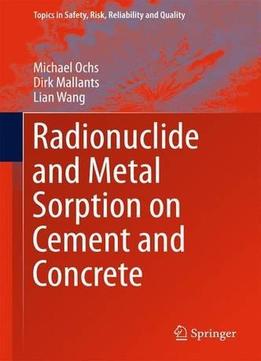
Radionuclide And Metal Sorption On Cement And Concrete
by Dirk Mallants /
2015 / English / PDF
6.2 MB Download
This work describes sorption values (distribution coefficients) for twenty-five elements (Ag, Am, Be, C, Ca, Cl, Cs, H, I, Mo, Nb, Ni, Np, Pa, Pb, Pd, Pu, Ra,Se, Sn, Sr, Tc, Th, U, Zr) that often need to be considered in environmental impact assessments for the disposal of cemented radioactive or industrial wastes. Mainly on the basis of literature data, best estimate or representative sorption values in addition to upper and lower bound values were determined. The approach to estimate sorption values and associated uncertainties comprised expert evaluation if there were directly relevant data, and expert estimation on the basis of analogue information where there are no directly literature data. The basic data consider cementitious materials made from benchmark cement, which is pure cement without effects of organics, high chloride or other ions. Effects of organic complexants and other perturbing components including high chloride concentrations are discussed separately. The geochemical evolution of cementitious materials is also addressed, as this provides valuable information on the evolution of the cement pore water composition and the mineral composition of concrete. Four typical states of cement evolution are determined and the impact of environmental boundary conditions discussed. Representative sorption values are derived for these four characteristic degradation states of concrete. The underlying mechanisms responsible for sorption are also discussed.











